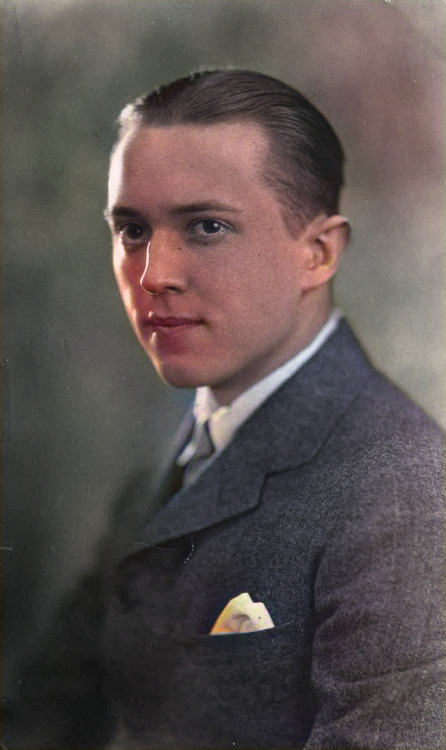#cornetist
Text
Bix Beiderbecke: A Jazz Legend Ahead of His Time
Introduction:
Bix Beiderbecke was a jazz cornetist and pianist who rose to fame in the 1920s. Despite his short career, his innovative style and unique approach to music have had a lasting impact on jazz. In this blog post, we will explore the life and legacy of Bix Beiderbecke, and his contributions to the jazz genre.
Early Life and Career:
Bix Beiderbecke was born in Davenport, Iowa in 1903.…
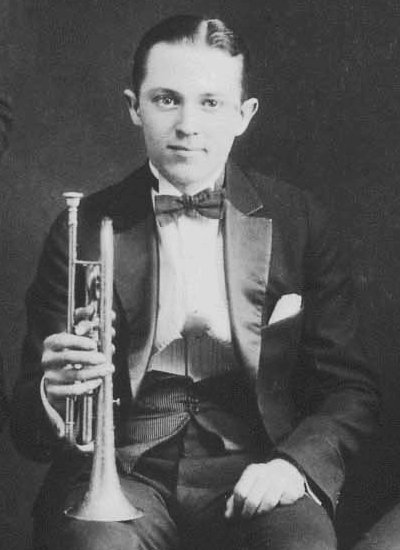
View On WordPress
#Bix Beiderbecke#Chet Baker#Frankie Trumbauer#Jazz Cornetists#Jazz History#Jazz Pianists#Jean Goldkette Orchestra#Miles Davis
1 note
·
View note
Text
Casadinha safadinha se mostrando
My Friend Sex With Me In Hotel
Never seen somebody fuck that slow
Latin girl fingering her pussy to pass the time.
Petite Asian Model "PingSun" Hardcore Doggy Fuck! IG/OF - (DaddyslilAsian23)
Reluctant straight boys fucking gay Nu reacted with making some
Busty Black Lesbian Girls Having Some Anal Fun
Oh daddy
She makes me cum twice in the morning, romantic sex with my big ass girlfriend
rica veneca en peru
#scrummaging#ivory-hafted#depthwise#scoundrelish#Vilela#stockateer#development's#stephanos#cornetists#hematoporphyrinuria#Peromyscus#Moham.#Christliness#genteelest#deutoxide#diplosome#dimitted#anviltop#okshoofd#sereshaw
0 notes
Text
Urvashi Rautela Deep Cleavage
Margareth Campuzano Ecuatoriana Famosa bailando se queda semidesnuda
MILF Step Mom And Her Step Daughter Threesome With Step Son POV
Teen Fucks Her Stepdads BBC In The Bathroom
Che bella troia
Dickasssex presents new hot Desi gay sex video with delhi guy with hard long and thick dick
Teen gets pussy tongued
Hot thick ass girl ride n swallow
White Brit Teen Slut Rides Then Gets Doggystyled By Her Indian Daddy. IMWF
FAKEhub Originals Hot outer space lesbian being sexy seduction
#heehaws#damps#conversationalism#fifty-six#scrummaging#ivory-hafted#depthwise#scoundrelish#Vilela#stockateer#development's#stephanos#cornetists#hematoporphyrinuria#Peromyscus#Moham.#Christliness#genteelest#deutoxide#diplosome
1 note
·
View note
Text


Today In History
William Geary “Bunk” Johnson, pioneer jazz cornetist and trumpeter, was born in New Orleans, LA, on this date December 27, 1879.
Johnson was regarded as one of the leading trumpeters in New Orleans jazz touring with minstrel shows and circus bands. In the 1920’s and 1930’s.
Johnson set off on a wild seven-year jazz history odyssey, playing in San Francisco, Los Angeles, Boston, New York, New Orleans, Chicago and Philadelphia, being praised by the press, and making dozens of records that were said to be authentic recreations of the earliest forms of jazz.
CARTER™ Magazine
#carter magazine#historyandhiphop365#wherehistoryandhiphopmeet#carter#history#cartermagazine#today in history#staywoke#blackhistory#blackhistorymonth#William Bunk Johnson#bunk Johnson
33 notes
·
View notes
Text
Music is an Essential Verb: Derek Taylor 2023

Music remains, along with family, friends, and a select few venial vices, my primary daily defense against the mental erosions of spiritual malaise and existential dread. Being a humanist also means being a realist, and little looks to be different on that score in the year ahead as we continue to careen toward a bleak and self-defeating dénouement. The veil of uncertainty around what ultimately feels like inevitability redoubles the need to remain thankful for and supportive of those who devote themselves to art. Summary capsules below describe some of the sounds that kept me going in 2023.
Peter Brötzmann, Wayne Shorter, Kidd Jordan, & Charles Gayle
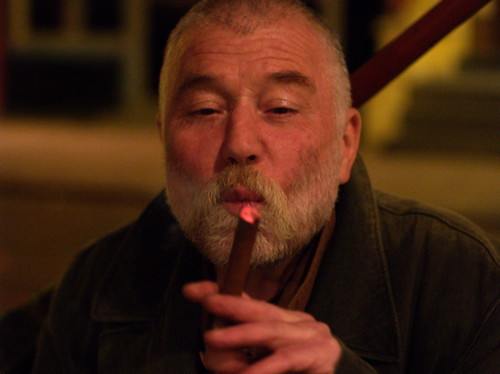
“The trauma of my generation was what our fathers had done to the rest of the world, and so we said, ‘never again,’ and that was the whole impetus through all my life, and it still is.” ~ Brötzmann (2018)
Musician attrition and demise are dispiriting aspects of every annum, but the departure of four disparate octogenarian reedists exacted an especially steep emotional and cultural toll this year. Shorter and Jordan passed away in March, each of them leaving a rich legacy as indefatigable improviser and altruistic educator that continue influence and inspire. Brötzmann exited in June after the return of a protracted respiratory illness. Few if any can match the magnitude of his mileage and six-decade itinerary as an irrepressible, obstinately adventurous world traveler. Gayle ascended in September, an ardent, uncompromising eremite to the end. All four men left behind discographies and concert/interview footage that will leave the faithful and curious listening and marveling in perpetuity, but their collective absence still aches.
Kirk Knuffke & Joe McPhee Quartet + 1 – Keep the Dream Up (Fundacja Sluchaj)
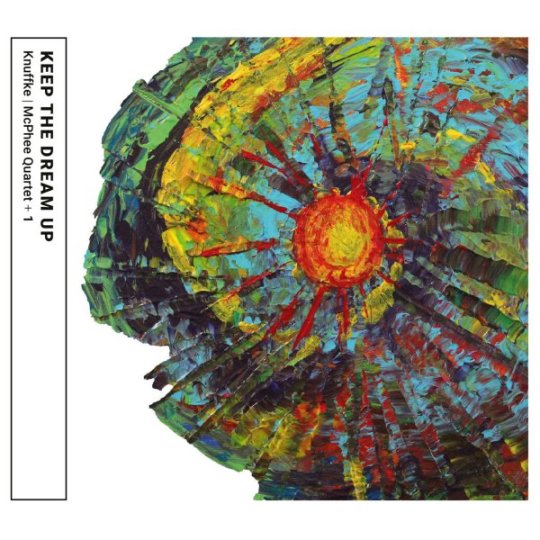
One of the manifold joys of following the output of Kirk Knuffke is anticipating who he’ll collaborate with next. The cornetist’s ears and imagination are as huge as his heart, a trait he has in common with the equally equanimous Joe McPhee. They’ve known each other for years but Keep the Dream Up is their first released collaboration and it’s an affirming alloy of their complementary creative temperaments. Longtime McPhee comrades Michael Bisio and Jay Rosen complete the quartet with bass clarinetist Christof Knoche comprising the additive on a Brooklyn studio session that captures collective creative lightning in a digital bottle. My album of the year for these reasons and more, although hopefully Joe will bring his brass to a follow-up conclave soon.
Don Byas – Classic Sessions 1944-1946 (Mosaic)
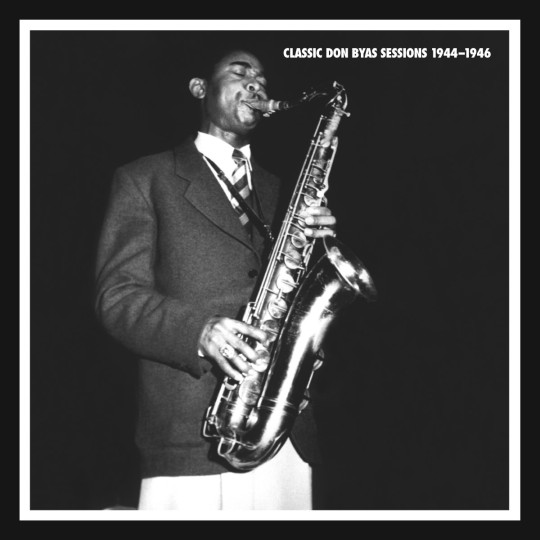
Saxophonist Don Byas recorded prolifically during the 1940s. His porous sound and popular style bridged the schools of swing and bop through prowess and panache aligned with the most esteemed of post-WII tone scientists. That sustained industriousness hasn’t reflected in reliable access to his works, primarily because they’re spread across a plethora of independent labels and competing copyrights. Leave it to Mosaic Records to rectify the longstanding reissue lacuna. This long gestating collection corrals and sequences the bulk of them across ten discs, scrubbing their sound, and adding an expansive cache of rarified verité concert recordings made in a Swedish jazz fan’s residence. Indulging in one’s Byas bias has never been easier or as edifying.
Fred Anderson – The Milwaukee Tapes Vol. 2 (Corbett vs Dempsey)
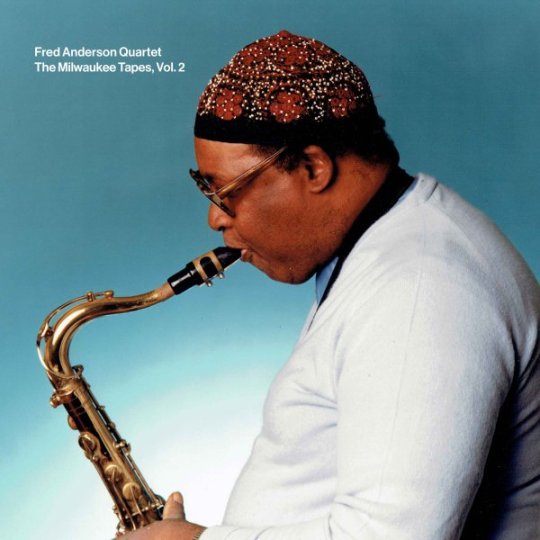
Patience and long-game aptitude are among music producer/archivist/advocate John Corbett’s virtues. This unexpected, but abundantly welcome sequel to an archival Anderson collection on Corbett’s long defunct Unheard Music Series took 23 years to secure commercial circulation and offers an additional hour-plus from the same gig in improved sound. Fellow AACMers Billy Brimfield and Hamid (nee Hank) Drake join bassist Larry Hayrod in bringing vibrant, detailed life to the Lone Prophet of the Prairie’s (as Anderson was affectionately known) serpentine, cerulean melodies. Corbett’s current label released a plenitude of music in 2023 (see also below) but the uncommon opportunity to hear more Anderson of any vintage makes this release worthy of independent mention.
Jason Adasiewicz
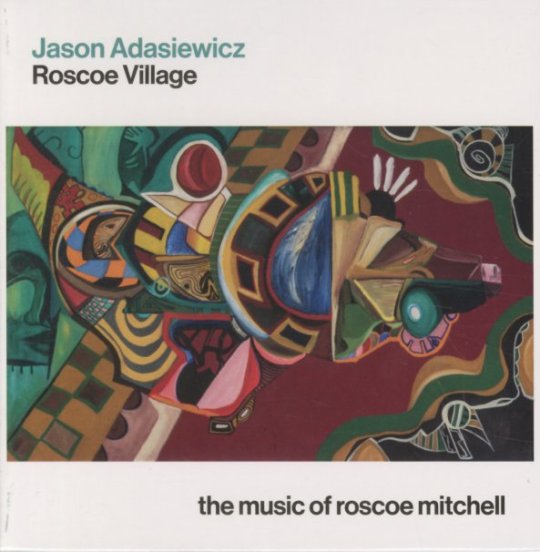
Corbett vs. Dempsey also had a welcome role in Jason Adasiewicz’s return to record with two different projects. On vinyl, Roy’s World documents a 2017 Chicago studio session by the vibraphonist’s quintet originally intended as the soundtrack to a film based on neo-noir novelist Barry Gifford’s short stories. Chicago stalwarts Josh Berman, Joshua Abrams, Hamid Drake, join saxophonist Jonathan Doyle in the ensemble for a program that sounds at once fresh and nostalgic while always vital. On CD, Roscoe’s Village dispenses with band for a solo selective foray through the songbook of Roscoe Mitchell including evocative renderings of “Congliptious” and “A Jackson in Your House” that retain the composer’s essence while striking out in bold new directions.
Natural Information Society
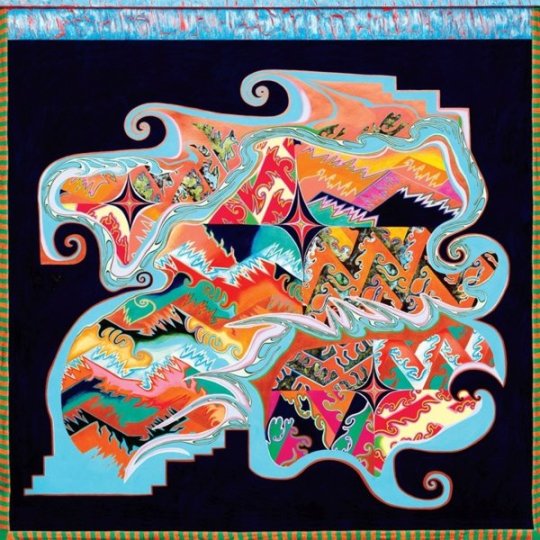
Grounded as it is in core voices of guembri, frame drum and harmonium, codification of Josh Abrams’ NIS as a jazz ensemble immediately feels reductively incomplete. All participating instruments can be active architects in the undulating, melody-laced drones that frequently form the basis of the band’s gradual, granulated improvisations. Performances are more akin to collective expeditions where a galvanizing gestalt effect is afoot; one where earned communal peaks preserve the individual power and agency of the interlocking parts. Since Time is Gravity augments this already catalytic template by incorporating a larger contingent of Chicago colleagues including tenorist Ari Brown to the equation.
Abdul Wadud
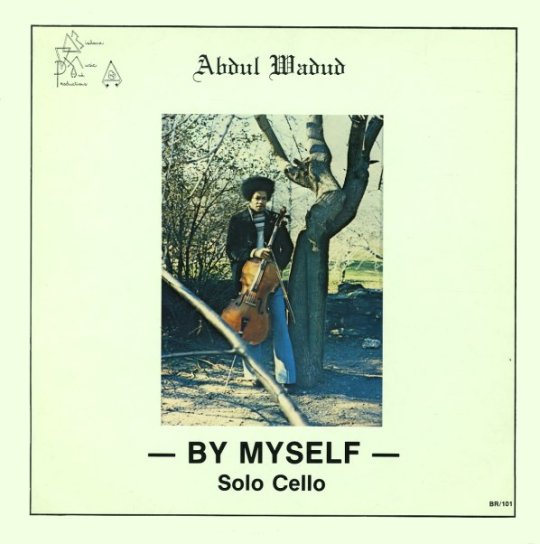
A jazz-based improviser on the cello who didn’t double on other stringed instruments, Wadud was also a consummate collaborator and sideman. Magnanimity in lending his substantial talents to the projects of others resulted in a paucity of albums under his own name. By Myself from 1977 on the Bisharra label is a revelatory anomaly on that self-effacing resume. Wadud approaches the instrument as a multifaceted sound factory, plucking, strumming, and bowing, often simultaneously, to create solo tone poems steeped in personal poignancy. Gotta Groove’s vinyl reissue is a beautiful facsimile of the original album object in faithfully reconstructed fidelity.
Marion Brown
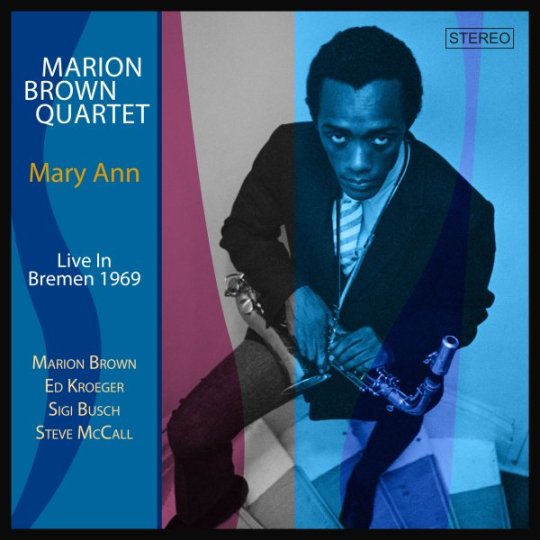
Georgia-born altoist Marion Brown had a lengthy, storied career but the body of recorded work that he left behind can present difficulties in terms of ingress to its totality. Scattered across labels, years, and circumstances, much of it is either out of print or commercially unreleased. That collective relative obscurity makes a trio of releases, two on the German Moosicus label, and a third Record Store Day viny reissue of Brown’s 1970 studio duets with Wadada Leo Smith under the shared sobriquet Creative Improvisation Ensemble even more valuable. Of the former two, Mary Ann presents concert material by Brown’s quartet from a 1969 Bremen club gig in soundboard fidelity. Gesprächsfetzen & In Sommerhausen combines two more German concert snapshots, quintet, and sextet, from 1968 & 1969 with Gunter Hampel originally released on the Calig imprint. Steve McCall is a boon on drums in all three contexts.
Art Pepper – Complete Maiden Voyage Recordings (Omnivore)
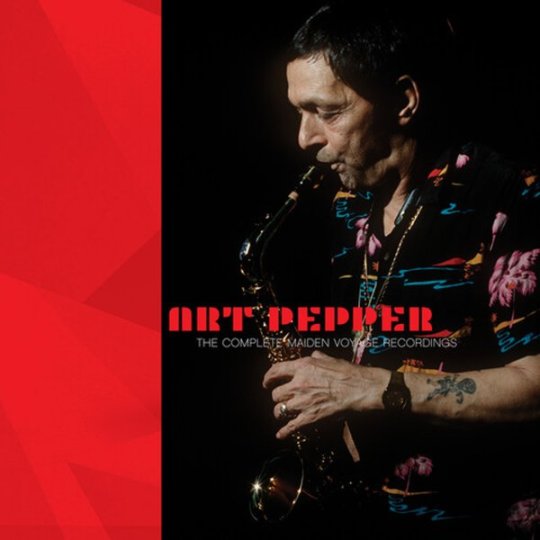
Art Pepper was an inveterate rake for most of his life, magnifying destructive interpersonal tendencies with drugs and frustratingly frequent acts of self-sabotage. That star-crossed propensity makes the fact that he left so much magnificent music even more miraculous. This lavish box is a fascinating compendium of the constantly competing artistic contradictions at his center, collecting a quartet gig across three nights and seven club sets in Pepper’s native Los Angeles, ten months prior to his premature passing at 56. Over half of the music is previously unreleased and the rhythm section, led by the impeccable and implacable pianistics of George Cables, gives Pepper a cumulative confidence boost that keeps him on the rails. None of it has ever sounded better.
Pan Afrikan People’s Arkestra

Los Angeles of the late-1970s was an unforgiving environment for the economic necessities of orchestral jazz. The Pan Afrikan People’s Arkestra, under the nominal leadership of pianist/composer/community organizer Horace Tapscott, was a tenaciously subversive force in the face of that ruinous rule. Adopting the Immanuel United Church of Christ as an informal base of operations, the large ensemble resourcefully engaged in an ambitious series of concerts in 1979. The Nimbus label, long a Tapscott exponent and repository, released the first three entries this year in an archival subscription series collecting the voluminous results. Titles are also available individually and present the pivotal band at a performative peak with star soloists Sabir Mateen, Billy Harris, Jesse Sharps, and Robert Miranda shining just as bright as their fearless foreman.
Alan Skidmore – A Supreme Love
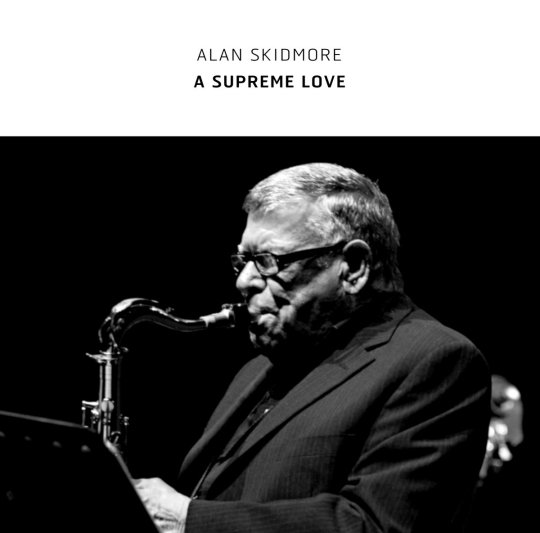
Unexpectedly issued on Mark Wastell’s Confront label, an imprint better known for its fealty to free improvisation, this six-disc archival tribute to Alan Skidmore’s 70+ year career in music launches with the saxophonist’s 1961 radio debut and lands some seven-hours later with his intimate 2019 rendering of John Coltrane’s “Psalm.” The aural expanse between is brimming with bright moments and luminary collaborators the likes of which include Tony Oxley, Kenny Wheeler, Wayne Shorter, Dave Holland, Mike Osborne, Elvin Jones, and another dozen name drops from the top tier of improvised music. It’s a wild, illuminating ride and a sterling example of a musical memorial done right.
The Jazz Doctors – Intensive Care/Prescriptions Filled: The Billy Bang Quartet Sessions 1983/1984 (Cadillac)

Billy Bang and Frank Lowe shared a bottomless fraternal bond forged through parallel traumas internalized in Vietnam and expressed by the subsequent embrace of the restorative power of improvised music. The pair of sessions (one reissued, one archival) collected on this disc epitomize their deep attachment arguably as well as any of their other numerous collaborations. Outside the cardinal duo, the Jazz Doctors never really had a stable lineup, but the quartets here embody two of their best. Both programs are loosely adherent to freebop conventions with violin and tenor saxophone combining over contrabass and drums for a potent front line. Bang and Lowe are long gone now, their shared absence making the availability of this music even more precious.
Attila Zoller & Jimmy Raney
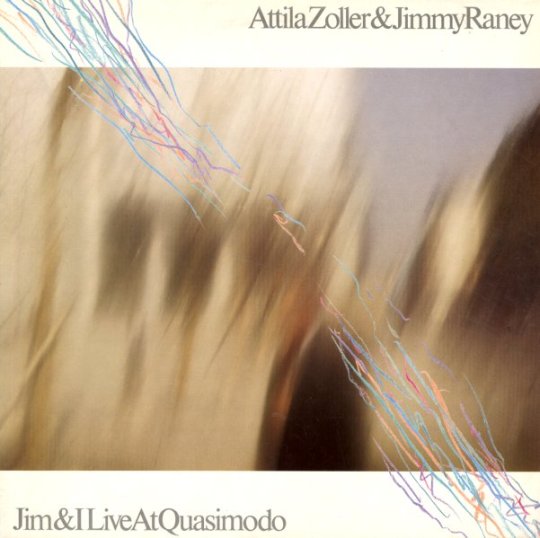
Hungarian guitarist Attila Zoller had selective affinity for other artists on the instrument, so much so that his mid-career period is seeded by fateful encounters with plectrist peers. Most prolific among these partnerships was his prudent pairing with Jimmy Raney. A popular proponent of bop-based jazz, Raney was in a similar exploratory headspace when the two joined forces on a trio of recordings for the German L + R label over a seven-year span. Concert dates from Frankfurt (’80) and Berlin (’86) find the duo spooling out lengthy dialogues that dabble in free improvisation while keeping codified melodies within reach. An earlier New York encounter (’79) explores their rapport in a studio. All three reissues on the Japanese Ultra-Vybe imprint are aces.
Steve Swell’s Fire Into Music
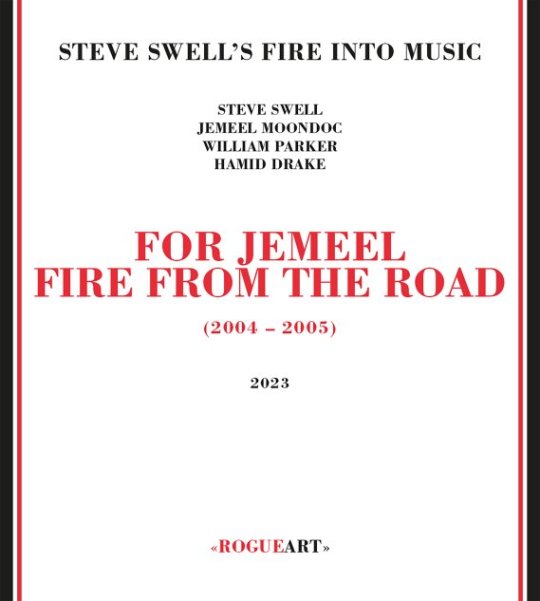
Simultaneously emblematic of NYC free jazz in the early aughts and fiercely dedicated to resisting pitfalls of provincialism by touring generously and rigorously, trombonist Steve Swell’s Fire into Music was one of the finest quartets of its kind. Posthumously dedicated to the late altoist Moondoc, this three CD set collects a trio of small venue concerts by the band from gigs in Texas and Ontario. As with the horns, William Parker and Hamid Drake are ideally suited to the extended, expository freebop safaris that formed the ensemble’s flexible repertoire. Swell’s the leader on paper but sagely embraces musical communalism without fail.
Intakt

Running a physical media imprint in the 21st century is an inherently parlous enterprise, but this steadfast Swiss label continues to evidence how it’s done. This year’s standout catalog entries include Andrew Cyrille’s Music Delivery/Percussion, the octogenarian drummer’s third solo album and first in 45-years; bassist Jöelle Leandré’s solo Zurich Concert; pianist Aruán Ortiz’s Serranías Sketchbook for Piano Trio; Beyond Dragons by the trio of saxophonist Angelika Niescier, cellist Tomeka Reid, and drummer Savannah Harris, and Ohad Talmor’s Back to the Land, a quartet-plus-guests survey that takes its compositional focus an archival workshop date by Ornette Coleman and Lee Konitz.
Ezz-thetics
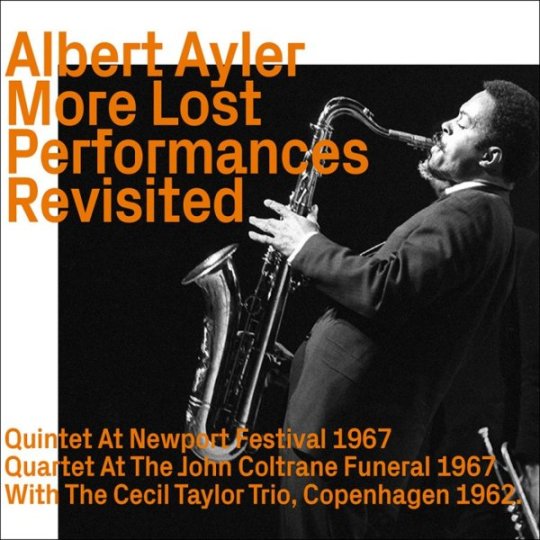
The appearance of the Swiss Ezz-thetics imprint four years ago raised both eyebrows and ire. Lacking access to master tapes, veteran free jazz and new music producer Werner Uehlinger sourced commercially released editions instead, employing ace audio engineer Peter Pfister succeeded by Michael Brandli to rejuvenate and refurbish the recordings, stateside copyright considerations be damned. Reaction was expeditious and polemical, but proof is in the hearing as most of the label’s dozens of releases sound better than their original incarnations. Catalog highlights this year include another round of Albert Ayler airshots including his pivotal meeting with the Cecil Tayor Trio in 1962 on More Lost Performances, Charles Mingus’ At Antibes 1960, and Ornette Coleman’s At the Golden Circle.
Fresh Sound
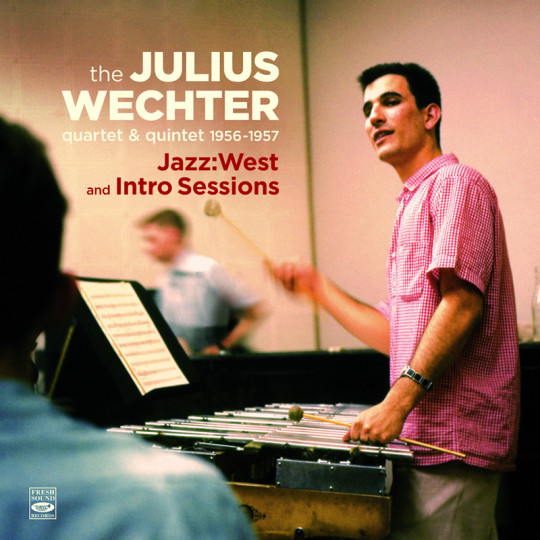
Jordi Pujol is akin to Uehlinger in that he refuses to let his vision and ambitions as a producer be abbreviated by external opinion. In Pujol’s case it’s yielded a bountiful inventory of antiquarian titles that rights holders have shown little to zero interest in restoring to begin with. Cases in point for this year include a definitive collection of obscurando saxophonist Boots Mussulli’s works; concert and studio collections by the Count Basie alumni tandem of Al Grey and Billy Mitchell; hens’ teeth rare leader sessions by Arthur Lyman vibraphonist Julius Wechter; and a two-fer of Julliard-trained Ellingtonian Cass Harrison piano trio albums. Exciting guilty pleasures all around.
Playing for the Man at the Door

As complex as he was controversial, Robert “Mack” McCormick deserves consideration in the esteemed company of other maverick cultural archivists like Alan Lomax, George Mitchell, and Harry Smith. With a preservationist purview mostly comprising Texas and bordering states, McCormick spent much of his adult life obsessively documenting and disentangling the cultural capital of the region through recordings, photography, interviews, essays, and research. Smithsonian Folkways became repository for the massive reservoir after his passing and this box is the first in what will hopefully be multiple dispatches from the same. Unreleased field recordings of Mance Lipscomb and Lightnin’ Hopkins represent the big names, but works by the likes of Hop Wilson, Cedell Davis, Robert Shaw, and a handful of others are just as persuasive. Bongo Joe Coleman’s impassioned presidential pitch closing the set will have listeners pining for a time when third party Executive Branch candidacy didn’t seem so fraught.
Joni Mitchell Archives - Vol. 3, The Asylum Years 1972 to 1975
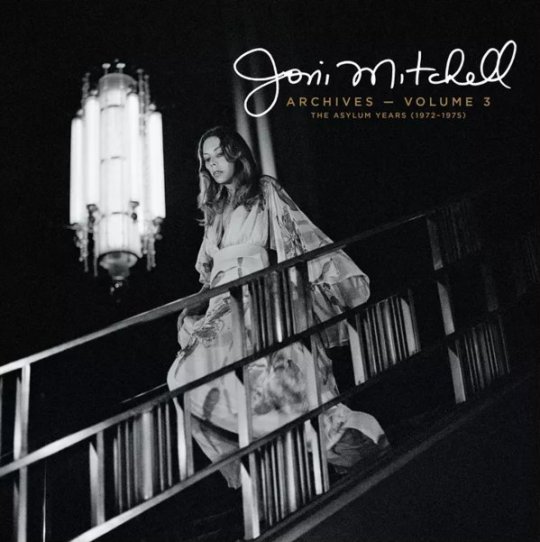
Mitchell’s continuing project corollary to her old friend Neil Young’s analogously exhaustive retrospective enterprise, this third entry in the series finds her 30-something-self further broadening the lens of her art beyond the solo concert music that dominated the first two boxes. There are stirring solitary shows here, too, but it’s the band offerings that prove most revealing, particularly in the company of reedist Tom Scott’s fusion group L.A. Express. James Taylor, Graham Nash, and David Crosby lend contributory hands, and there’s a brief but intriguing collaboration with Young alongside a trove of demos and workshop versions of songs from her first three albums for Asylum.
Martin Davidson

In closing, another memorial. Martin Davidson wasn’t a musician, but European free improvisation as an art and archive would be a fraction of what it is without his copious and enduring work. As steadfast proprietor of the Emanem label he put his resources into musicians whose efforts frequently fell outside the probability of consistent commercial remuneration. Under his aegis, influential improvisers like Steve Lacy, Derek Bailey, Evan Parker, and Paul Rutherford gained robust catalogs alongside other aspiring artists who never garnered even niche cachet. Davidson was a curmudgeon and an anachronism, trusting his ears implicitly, suffering the indignities of inquiries from strangers seeking audience with the hip hop icon who shared the phonetics of his imprint’s name, and advancing the pleasures of physical media well past their purported expiration date. He was also a talented writer, adding invaluable context to his releases through first-person testimony and critique. Martin will be missed.
And as is tradition in this 20th iteration of this year-end exercise, 25 more titles in stochastic order. Thanks to all for reading, and gratitude to Jennifer Kelly for providing the forum and formatting.
Rodrigo Amado’s The Bridge – Beyond the Margins (Trost)
James Brandon Lewis – For Mahalia with Love (Tao Forms)
Henry Threadgill – The Other One (Pi)
Guillermo Gregorio – Two Trios (ESP)
Rob Brown – Oceanic (RogueArt)
Rich Halley Quintet – Fire Within (Pine Eagle)
Milford Graves w/ Arthur Doyle & Hugh Glover – Children of the Forest (Black Editions)
Mike Osborne – Starting Fires: Live at the 100 Club 1970 (British Progressive Jazz)
Jim Hall – Uniquities Vol 1 + 2 (ArtistShare)
Madhuvanti Pal – The Holy Mother (Sublime Frequencies)
V/A – On the Honky Tonk Highway with Augie Meyers & the Texas Re-Cord Company (Bear Family)
Mal Waldron & Terumasa Hino – Reminiscent Suite (Victor/BBE)
Oum Kalsoum – L’Astre D’Orient 1926-1937 (Fremeaux & Associates)
Sonny Rollins w/ the Heikki Sarmanto Trio – Live at Finlandia Hall Helsinki 1972 (Svart)
V/A – Equatoriana: El Universo Paralelo de Polibio Mayorga (Analog Africa)
Evan Parker – NYC 1978 (Relative Pitch)
V/A – If There’s a Hell Below (Numero Group)
John Coltrane – Evenings at the Village Gate (Impulse)
Derek Bailey & Paul Motian – Duo in Concert (Frozen Reeds)
Peter Brötzmann/Fred Van Hove/Han Bennink/Albert Mangelsdorff – Outspan 1 & 2 (FMP/Cien Fuegos)
Hasaan Ibn Ali – Reaching for the Stars: Trios/Duos/Solos (Omnivore)
Mark Dresser – Tines of Change (Pyroclastic)
Steve Millhouse – The Unwinding (Steeplechase)
Myra Melford’s Fire and Water Quintet – Hear the Light Singing (RogueArt)
V/A – Destination Desert: 33 Oriental Rock & Roll Treasures (Bear Family)
#dusted magazine#derek taylor#yearend 2023#Peter Brötzmann#Wayne Shorter#jazz#kidd jordan#charles gayle#kirk knuffle#joe mcphee#don byas#fred anderson#Jason Adasiewicz#natural information society#Abdul Wadud#marion brown#art pepper#Pan Afrikan People’s Arkestra#Alan Skidmore#The jazz doctors#Attila Zoller & Jimmy Raney
15 notes
·
View notes
Text
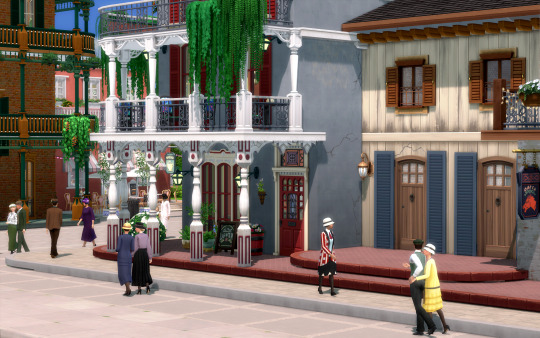
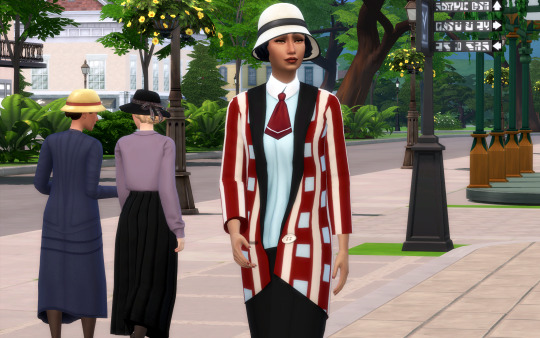
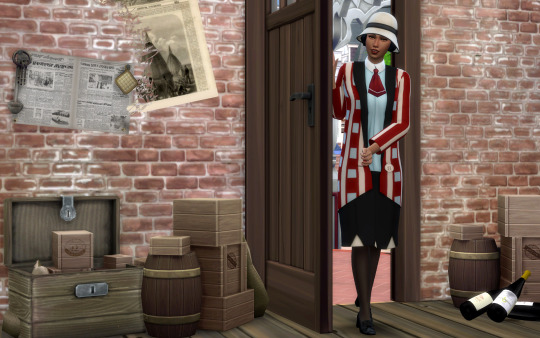
Josephine walked through the city streets to her new office. Sure it was a run down, one room shack beneath another house, but hell she had earned it. She had plans to get out of the club industry for good. Well, at least from behind the bar. If she was going to be on that scene now, she was going to run it.
Her list of clients had grown beyond her wildest dreams. It had started small. A cornetist here, a pianist there. Then it had grown to full brass bands, helping them connect with parties and second lines across the city. Now suddenly clubs across town were contacting her to arrange their talent, or to manage them when they got rowdy.
The profits weren’t huge, but hell, it was better than the tips she made down at the club. She would have to tell Antoine that she was leaving the club full time, but he and Zelda held down the place quite nicely on their own now.

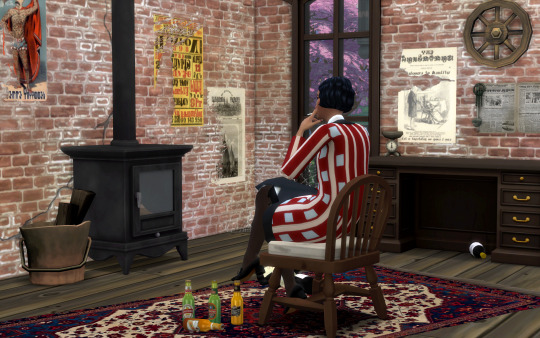


Jo took one look around the shabby room and laughed. The owner had told her that it was being used as a journalist’s office; what a load of shit, she thought. Clearly some bootlegger had been using it as his base of operations. She kicked at the wine bottles scattered on the floor. Each and every one empty. What a shame.
She sat down on the only chair in the place, threw off her cloche, and lit a cigarette. Looking around at the cracks and the cobwebs, Jo thought about the few musicians she represented now. So many other people she knew had already gone north, to Chicago or New York or even L.A. She got it, of course she did. It was hell down here for them, playing at segregated clubs, taking a fraction of what they’d make up north, constantly looking over their shoulder for the next bastard to take them down a notch.
She thought of Antoine, and of that last racket that had taken him off the scene for good. She shook off her anger at the man who had dared to touch him. But her brother had always been so quick to fly off the handle; all fire, no plan on how to profit off of their prejudice and malice the way that their mother had taught her.
Well, she had a plan. And she would be damned if anyone else she loved got driven out of this city too.
#1923#ts4 decades challenge#sims 4 decades challenge#sims 4 historical#ts4 historical#sims 4 legacy#ts4 legacy#sims 4 story#ts4 story#the darlingtons#1920s#josephine duplanchier
96 notes
·
View notes
Photo
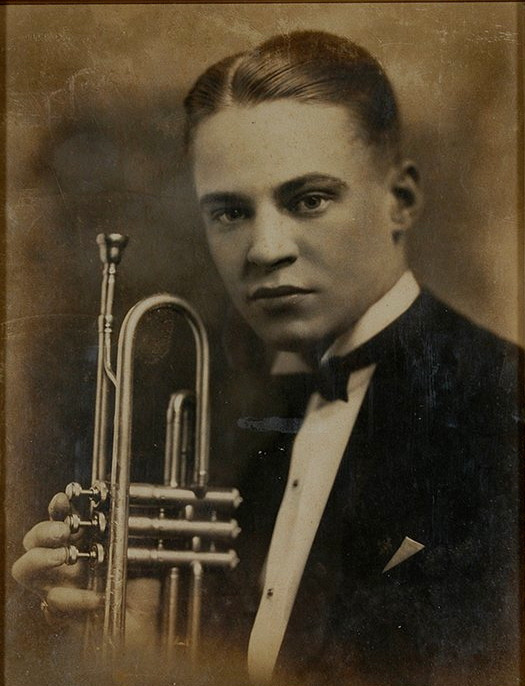
Happy Birthday, Bix Beiderbecke !! Leon "Bix" Beiderbecke (March 10, 1903 – August 6, 1931) was an American jazz cornetist, jazz pianist, and composer.
35 notes
·
View notes
Text
Part 11
Warnings: Teen Flashback Violence
Riri rushes to the second floor restroom crying.
*Flashback*
“Good Night Shuri.” The words echoed in her ears as Shuri left Ri’s house. This internet thing had to end now. Tonight was her Homecoming proposal all going to waste because of Xavier. She calls one of Baba’s old students basically her big brother M’Baku. “Brother I need your support with something.” “Do I have to fight little sister?” “Only you if you want.” Shuri explains the situation with Xavier and how he has the internet trying to dirty up her name and maybe she mentioned Riri. “Sister I will help you but after this you have to think smarter. Your anger is not going to solve this for the long run.” “Brother I know but for now I just need him taken care of.”
They meet at the game and Shuri texts Xavi to meet her in the women's locker room across from the field. It is not used during football season so it is the perfect cover in case things go crazy. Xavi enters the door and M’Baku moves behind him and locks it. “Xavier what is your problem? You are making fake accounts now?” With a sinister smirk playing on his face, Xavi steps closer to Shuri. “Just getting my revenge Superstar. Or did you forget I was passed up on my NIL deal for you?” “All this over an NIL deal are you crazy? I didn’t even take the deal.” “I know that’s why you deserve this. I’ll never have another shot and I am going to make it so you don’t either.”
Shuri explodes and pushes him up into the lockers. “If all this is about me, why are you bringing Ri into it? Disrespecting her with your comments.” “She was just my in because you are such a goodie goodie I used what I had. Also she just sexy asf fuck under them boy clothes and I don’t get denied if you know what I mean.” Shuri knocks him across the face for that last part busting his lip. He starts to come after Shuri but M’Baku grabs him. “X this is the end of the line. I will not tolerate another moment of disrespect toward her. I will personally make life very hard for you if you do. As for me and you. We will see if I never have another shot.”
*end of flashback*
Riri is leaning over the sink looking at herself in the mirror. The crying made her throw up but she’s not sad. She’s happy and disappointed in herself. Shuri is the one hands down there is no question she’s got to make it right the anxiety is real but no more running. She calls her sister because lunch and free period are soon so she must act fast. Shuri LOVES sweets, roses and corny stuff. So Riri hatches a plan to do the cornetist thing she knows to do.
Lunch rolls around and Sharon brings Riri all the elements she needs right at the start. Riri goes and waits at the end of the tunnel to catch some of the girl basketball players so they can help her stage and convince Shuri to come to the main locker room after the lunch pick up game. MJ is there waiting as lunch comes to a close so she can record.
Al is the major key to this because she agreed to get Shuri to the main locker room. “Yo Shuri, come back to the main with us. You got to stop sulking.” “Al I am not sulking you know I like my peace time after the pick up. Today was crazy, plus my girl is still not talking to me.” “I know but just for a second I got something that can cheer you up.” Unsuspecting Shuri follows Al into the main locker room. The lights were off but someone was standing in front of her locker Shuri noticed. Flipping on the light the team was standing holding out a rose to Shuri. In the middle stood Rihanna with a corny note on a huge post it.
“Baby I need you to know I’m sorry for being so scared and stubborn. When you told me you had my back I never knew to what extent. But today I realized there's no limit. So I’m done running. I want you and I’m with you no matter what. You are my air.” The note reads Will you go to Homecoming with me? Yes box, No box and Maybe box. Shuri walks up slowly nodding a yes before kissing Riri. All of this was captured on live that everyone’s phone got a notification for so her statement to Shiri could be done out loud. Riri loves being a genius sometimes.
The team claps and cheers rooting them one as the live ends and they decide to go to the smaller locker room to talk. Shuri is leaning on the lockers smiling down at Ri. Ri holds her gaze and smiles back. “I am sorry how I reacted was not fair to you and I realized that before today, I just felt I had to find the right moment.”
Shuri pulls Ri close and holds her chin so they can look into each other's eyes. “I accept your apology. It doesn’t need to be perfect for you to talk to me. All I want is to know what’s going on so I can help.” Riri closes her eyes and smiles. “Somehow you read my mind this time though.” Throwing her head back, Shuri laughs. “Wow, I think I can read it now. Actually.” Smirking devil like she leans in to kiss Riri. Parting for just a moment. “I don’t need everything perfect. You can talk to me even if you don’t know what to say.”
Ri closes the gap between them again. This kiss is longer and egar. Shuri runs her hands around Riri’s body to the small of her back, biting at her bottom some. This causes Ri to part her lips and Shuri takes the lead of adding tongue. They kiss and explore each other making out until the bell.
@somethingcleaverandwhitty @mal-urameshi @shuriris-stuff @dominiquesheart
24 notes
·
View notes
Text

Rex Stewart – The Happy Jazz of Rex Stewart
The Happy Jazz of Rex Stewart, also reissued as The Rex Stewart Memorial Album, is an album by cornetist Rex Stewart which was recorded in 1960 and released on Prestige Records’ subsidiary Swingville label.
“The music is full of good spirits and memorable moments … Highly recommended and well worth searching for” – Scott Yanow/AllMusic.
2 notes
·
View notes
Photo
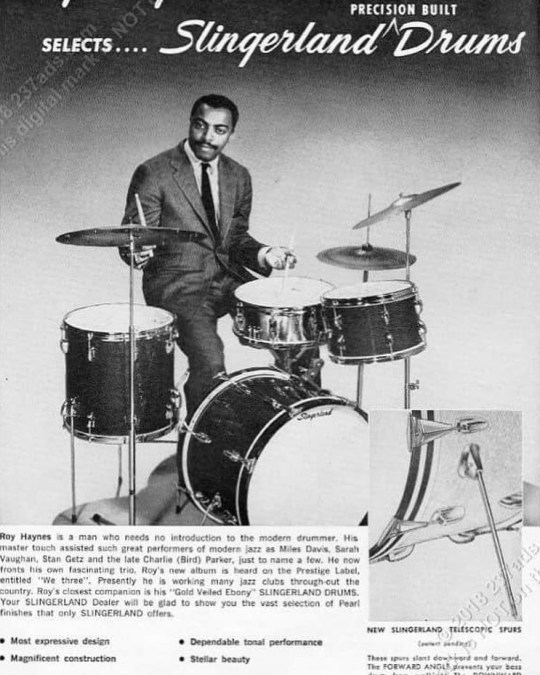
Roy Owen Haynes (born March 13, 1925) is a jazz drummer. He is among the most recorded drummers in jazz. In a career lasting over 80 years, he has played swing, bebop, jazz fusion, and avant-garde jazz and is considered a pioneer of jazz drumming. "Snap Crackle" was a nickname given to him in the 1950s. He has led bands such as the Hip Ensemble. His albums Fountain of Youth and Whereas were nominated for a Grammy Award. He was inducted into the Modern Drummer Hall of Fame. His son Graham Haynes is a cornetist; another son Craig Holiday Haynes and grandson Marcus Gilmore are both drummers. He was born in Boston to Gustavas and Edna Haynes, immigrants from Barbados. His brother, Michael E. Haynes, became an important leader in the community of Massachusetts, working with Martin Luther King Jr. during the civil rights movement and for forty years serving as pastor of the Twelfth Baptist Church. He made his professional debut in 1942 and 1945 began his full-time professional career. He worked with saxophonist Lester Young and was a member of saxophonist Charlie Parker's quintet. He recorded at the time with pianist Bud Powell and saxophonists Wardell Gray and Stan Getz. He toured and recorded with singer Sarah Vaughan. He lent his voice to the open-world video game Grand Theft Auto IV. He was awarded the Danish Jazzpar prize, and the French government knighted him with the Chevalier de l'Ordre des Arts et des Lettres. He received honorary doctorates from the Berklee College of Music, the New England Conservatory, as well as a Peabody Medal. He was inducted into the DownBeat magazine Hall of Fame. He was awarded the Mid Atlantic Arts Foundation's BNY Mellon Jazz Living Legacy Award. His album Birds of a Feather: A Tribute to Charlie Parker was nominated for the 44th Annual Grammy Awards as Best Jazz Instrumental Album. He was named a recipient of a Grammy Lifetime Achievement Award by the National Academy of Recording Arts and Sciences and he received the award at the Special Merit Awards Ceremony & Nominees Reception of the 54th Annual Grammy Awards. He was given the Lifetime Achievement Award by the Jazz Foundation of America. #africanhistory365 #africanexcellence https://www.instagram.com/p/Cpuo_c-uV4r/?igshid=NGJjMDIxMWI=
2 notes
·
View notes
Text
Woody Shaw: A Jazz Virtuoso's Journey Through Innovation and Legacy
Introduction:
Woody Shaw, born Woody Herman Shaw Jr. seventy-nine years ago today on December 24, 1944, in Laurinburg, North Carolina, emerged as a transformative force in the world of jazz. A trumpeter, flugelhornist, cornetist, composer, arranger, bandleader, and educator, Shaw left an indelible mark on the genre. Widely regarded as one of the most influential jazz trumpeters and composers of…

View On WordPress
#Blackstone Legacy#Chris Botti#Clifford Brown#Dizzy Gillespie#Eric Dolphy#Fats Navarro#Jazz History#Jazz Trumpeters#Larry Young#Miles Davis#Rosewood#Sarah Vaughan#Song of Songs#Stepping Stones: Live at the Village Vanguard#Terence Blanchard#Wayne Shorter#Willie Bobo#Woody Shaw#Woody Shaw: The Complete Columbia Albums Collection#Woody Shaw: The Complete Muse Sessions#Wynton Marsalis
6 notes
·
View notes
Text



HAPPY BIRTHDAY to bassist Mark Andes (Spirit), Prince Andrew, reggae legend Horace Andy, vocalist Burton C. Bell, photographer/singer Cassie Blair, Constantin Brâncuși, Frances Bucholz (Scorpions), tap dancer John Bubbles, Nicolaus Copernicus, Justine Bateman, Lou Christie, Haylie Duff (NAPOLEON DYNAMITE), Falco, pianist and Erik Satie curator Frank Glazer, Eddie Hardin (Spencer Davis Group), Peter Holsapple, Tony Iommi, Pierre van der Linden (Focus), cornetist “Kid Shots” Madison, Lee Marvin, Paul McCartney’s 1971 UK single “Another Day,” Carson McCullers, Alan Merrill (“I Love Rock’n’Roll”), Merle Oberon, Andy Powell (Wishbone Ash), Kate Radley (Spiritualized), Smokey Robinson, Bobby Rogers (Miracles—good to have met you), Seal, Sibelius’s 1923 6th Symphony, Karen Silkwood, Richard Strauss’s 1903 opera ELEKTRA, Amy Tan, Benecio Del Toro, Dave Wakeling, Jamie West-Oram (The Fixx), and my friend, guitarist singer-songwriter Christopher Haggerty. In the mid-80s Chris and I were in a band called October. We made recordings and gigged frequently around the San Francisco Bay Area. Our friendship continued and I got to know Chris as one of the most kindest, patient, and saintliest man one could ever know. Check out his current work with the HardWest Project, a ministry to the homeless https://www.hardwestproject.org. Christ also has an amazing family (with his son Patrick in the band Gold Connections https://gold-connections.bandcamp.com ). I’m working on digitizing a trove of recordings featuring the talents of Chris in various capacities. Here’s a clip of us performing live with the band October (note Ron Davis’s rocket-fueled drumming)—a raucous New Wave-ish version of “One Planet One Utopia One Helmet” https://johnnyjblairsingeratlarge.bandcamp.com/track/one-planet-one-utopia-one-helmet-live-1986-remastered-2021
#utopia #planet #helmet #sanfrancisco #jellobiafra #deadkennedys #politics #election #protest #bumpersticker #areopogus #stpaul #ziggystardust #davidbowie #thewho #sellout #thekinks #raydavies #soapopera #johnnyjblair #christianrock
#johnny j blair#singer songwriter#music#singer at large#san francisco#pop rock#Christopher Haggerty#Christian Rock
1 note
·
View note
Text
Rex Stewart - Trumpeter, Composer, Chef - Phantom Dancer 20 February 2024
Rex Stewart was an American jazz cornetist, composer and chef.
The Phantom Dancer is your weekly non-stop mix of swing and jazz from live 1920s-60s radio and TV every week.
LISTEN to this week’s Phantom Dancer mix (online after 2pm AEST, Tuesday 20 February) and weeks of Phantom Dancer mixes online at, at https://2ser.com/phantom-dancer/
REX
Rex studied piano and violin and dropped out of high…
View On WordPress
#1930s swing#1940s#1940s swing#2ser#airchecks#band remotes#greg poppleton#jazz#jazz cornet#jazz trumept#old radio shows#old time radio#rex stewart#swing
1 note
·
View note
Photo

Today In History William Geary “Bunk” Johnson, pioneer jazz cornetist and trumpeter, was born in New Orleans, LA, on this date December 27, 1879. Johnson was regarded as one of the leading trumpeters in New Orleans jazz touring with minstrel shows and circus bands. In the 1920’s and 1930’s. Johnson set off on a wild seven-year jazz history odyssey, playing in San Francisco, Los Angeles, Boston, New York, New Orleans, Chicago and Philadelphia, being praised by the press, and making dozens of records that were said to be authentic recreations of the earliest forms of jazz. CARTER™ Magazine carter-mag.com #wherehistoryandhiphopmeet #historyandhiphop365 #cartermagazine #carter #staywoke #bunkjohnson #jazz #blackhistorymonth #blackhistory #history #blacktwitter https://www.instagram.com/p/CmqinDhu5nN/?igshid=NGJjMDIxMWI=
#wherehistoryandhiphopmeet#historyandhiphop365#cartermagazine#carter#staywoke#bunkjohnson#jazz#blackhistorymonth#blackhistory#history#blacktwitter
21 notes
·
View notes
Text
LÉGENDES DU JAZZ
MUGGSY SPANIER, POUR L’AMOUR DU DIXIELAND
"…Muggsy plays a truer, more Negroid, more authentic jazz style than any other contemporary white jazz cornetist. He’s based his style closely upon the pattern of Oliver’s, at the same time taking a lot from [Louis] Armstrong but never falling under the influence of [Bix] Beiderbecke."
- Alma Hubner
Né le 9 novembre 1901 à Chicago, Francis Joseph "Muggsy" Spanier a d’abord commencé à jouer de la batterie, avant de passer au cornet dans le cadre d’un engagement avec Elmer Schoebel en 1921, avec qui il avait amorcé sa carrière professionnelle.
Comme la plupart des jeunes de son âge, Spanier rêvait de devenir un joueur de baseball professionnel. Spanier a d’ailleurs adopté le surnom de ‘’Muggsy’’ pour rendre hommage à John "Muggsy" McGraw, un gérant des Giants de New York de la Ligue nationale de Baseball. Spanier avait plus tard déclaré au sujet de McGraw: "McGraw knew what he wanted, and he’d run right after it without considering the consequences. That’s the way I played (jazz), on impulse, without figuring out the ‘why’ or ‘what’…and I didn’t do so badly."
DÉBUTS DE CARRIÈRE
C’est après avoir entendu Joe ‘'King'' Oliver jouer au Royal Gardens Cafe que Spanier s’était tourné vers le jazz. Spanier n’avait jamais reçu de leçons d’Oliver, mais il avait étudié son jeu avec attention. Spanier appréciait particulièrement le fait qu’Oliver restaut toujours collé à la mélodie tout en jouant très peu de notes. Décrivant sa collaboration avec Oliver, Spanier avait commenté:
"I got to know Oliver quite well. Both he and Louis [Armstrong] encouraged me in my playing a lot. Joe sometimes would teach me some of his tricks with the mutes; I learned a lot from him. After a little practice I was invited to sit in with the band. I was the first one to do so…it must have seemed strange, a little kid blowing cornet with those two Titans! That’s one thrill I’ll never forget: having played with the two greatest cornetists in jazz!"
Une autre importante influence de Spanier était le groupe New Orleans Rhythm Kings, qu’il avait entendu pour la première fois en 1920 avec George Brunies au trombone. Évoquant la collaboration de Spanier avec le groupe, le chef d’orchestre Sig Meyer avait déclaré: "Muggsy was fired with enthusiasm, a love of playing, and had that tremendous drive that gave the band he worked with an unbelievable lift."
Spanier avait obtenu une des plus grandes chances de sa carrière lorsque Oliver l’avait invité à se joindre au Oliver’s Creole Jazz Band dans le cadre d’une performance au Lincoln Gardens. Spanier avait d’ailleurs utilisé la sourdine dont Oliver lui avait fait cadeau lors de ses futurs concerts et enregistrements jusqu’à la fin de sa carrière.
Après avoir joué avec le groupe Bucktown Five au début des années 1920, Spanier avait travaillé avec les meilleurs groupes de l’époque, dont ceux de Ray Miller et Ted Lewis. Spanier a fait ses débuts sur disque le 25 février 1924 aux célèbres studios Gennett de Richmond. En 1927, Spanier s’était également produit avec les Chicago Rhythm Kings, dont faisaient aussi partie Frank Teschemacher à la clarinette, Mezz Mezzrow au saxophone ténor, Eddie Condon au banjo et au chant, et Gene Krupa à la batterie. Spanier était de retour en studio l’année suivante avec le groupe les Jungle Kings qui comprenait les mêmes musiciens à l’exception de Krupa qui avait été remplacé par George Wettling à la batterie. Évoquant sa collaboration avec le groupe, Spanier avait commenté en 1939: "I'm trying to play the kind of music I used to play with Tesch [Frank Teschmacher] and the old Chicago gang. All the same, I wanted to be up-to-date too. I want to have the old Chicago in New Orleans tradition and yet be something contemporary and distinctive."
Spanier a également participé aux premiers enregistrements du jazz dit de Chicago, notamment dans le cadre de la version du standard “I Found A New Baby” des Chicago Rhythm Kings et du classique “There’ll Be Some Changes Made” mettant en vedette Frank Teschemacher, Joe Sullivan, Eddie Condon et Gene Krupa. Avec le groupe de Lewis, Spanier avait aussi fait des apparitions dans deux films: ‘’Is Everybody Happy?’’ (1929) et ‘’Here Comes The Band’’ (1935).
Après avoir quitté le groupe de Lewis en 1936, Spanier avait assuré la relève d’Harry James (qui s’était joint à l’orchestre de Benny Goodman) avec le groupe du batteur Ben Pollack. Durant une performance du groupe à La Nouvelle-Orléans en 1938, Spanier, qui souffrait d’un ulcère à l’estomac en raison de son importante consommation d’alcool, avait été transporté en catastrophe à l’infirmerie de Touro. Spanier n’avait eu la vie sauve que grâce à l’intervention du Dr Alton Ochsner. Spanier avait expliqué: ‘’Doctors gave me up for lost after all those operations and I still can't understand how I survived. I could've gone back with Ted Lewis; only people were telling him I couldn't play anymore. That's why I got this little gang together just to show them I'm still around!"
Spanier avait éventuellement exprimé sa reconnaissance à Ochsner en composant deux pièces à son honnneur: “Relaxin’ at the Touro”, qui était devenue sa chanson-thème, et “Oh, Doctor Ochsner!” Joe Bushkin, qui avait joué du piano sur “Relaxin’ at the Touro”, avait plus tard été crédité comme co-auteur de la pièce. Comme Bushkin l’avait expliqué plusieurs années plus tard: "When I finally joined Muggsy in Chicago (having left Bunny Berigan's failing big band) we met to talk it over at the Three Deuces, where Art Tatum was appearing." Muggsy was now playing opposite Fats Waller at the Sherman hotel and we worked out a kind of stage show for the two bands. Muggsy was a man of great integrity. "We played a blues in C and I made up a little intro. After that I was listed as the co-composer of 'Relaxin' at the Touro'".
Spanier avait passé deux ans avec le groupe de Ben Pollack.
Durant son séjour avec le groupe de Pollack, Spanier avait participé à un enregistrement célèbre avec les Mound City Blue Blowers, qui comprenait à l’époque Red McKenzie, Jimmy Dorsey et Coleman Hawkins. Certaines des sessions du groupe de Lewis mettaient également en vedette de grands noms du jazz comme Fats Waller, Benny Goodman, Frank Teschemacher et les frères Dorsey.
Après une convalescence d’un an, Spanier était retourné à Chicago où il avait formé son groupe le plus connu, le Muggsy Spanier’s Ragtime Band. Le groupe de huit musiciens était notamment composé de George Brunies (ou Brunis) au trombone et au chant, de Rod Cless à la clarinette, de George Zack ou Joe Bushkin au piano, de Ray McKinstry, Nick Ciazza ou Bernie Billings au saxophone ténor et de Bob Casey à la batterie. Le 28 avril 1939, le groupe avait participé à l’ouverture du Sherman House Hotel de Chicago.
En 1939, le groupe avait enregistré seize pièces pour les disques Bluebird, une filiale de RCA Victor. Très bien accueillis par les critiques et les musiciens, ces enregistrements qui avaient bientôt été connus sous le titre de ‘’The Great Sixteen’’ avaient même contribué à une renaissance temporaire du Dixieland. Spanier avait commenté au sujet de ces enregistrements: "People want to know why Victor didn't get me to record more of those Ragtime sides, for they were one of the biggest sellers. But they were not commercial stuff....So I imagine this answers the question."
Comme l’écrivait le critique Alma Hubner:
"Muggsy Spanier's Ragtime Band invaded the Sherman and established a new record by remaining there for five and a half months. The band had coast-to-coast radio hookups and the crowds at the Sherman Hotel went for it in a big way. It played good jazz, which was good listening or dancing, whichever way you were inclined. Bands like…Bunny Berrigan’s and Gene Krupa’s played opposite them, yet Muggsy’s boys always managed to steal the show. It wasn’t only Muggsy’s driving, inspired cornet that proved sensational to the general public opinion; it was the band as a whole as well. George Brunis and his tail-gate trombone plus his irrepressible flair for comedy gave the Ragtimers a solid basis for good showmanship. Rod Cless’ clarinet was inspired and inspiring. Then too, men like Pat Pattison, Bob Casey, George Zack, Joe Bushkin, Ray McKinstry, Nick Ciazza, Marty Greenberg, Don Carter and George Wettling added to the atmosphere of perfection."
En octobre 1939, le groupe s’était rendu à New York pour jouer au club Nick's de Greenwich Village. Malheureusement, le contrat du groupe avait pris fin prématurément le 10 décembre.
Même si les disques s’étaient très bien vendus, le groupe n’avait pu trouver suffisamment de travail pour poursuivre ses activités. Malgré son succès apparent, le groupe avait dû être démantelé au bout de sept mois.
En 1940, Spanier s’est installé à New York et avait joué avec Max Kaminsky, Miff Mole et Brad Gowans dans le cadre d’un célèbre enregistrement qui s’était fait connaître sous le nom de “Jam Session at Commodore”. En septembre de la même année, Spanier était retourné à Chicago et s’était joint au groupe de dixieland de Bob Crosby. Décrivant sa collaboration avec le groupe, Spanier avait précisé: "One of my greatest thrills was playing with the Crosby band. I enjoyed myself immensely. Those boys had the right spirit. Jess [Stacey], Eddie Miller, Bobby Haggart, Nappy Lamare and Ray Bauduc certainly made something out of that band." Décrivant le séjour de Spanier avec la formation, Jim Cullum avait déclaré: "During his touring days with the Bob Cats, whenever the band would find itself in a bar with a juke box, Muggsy would always play the Great 16 records." Durant sa collaboration avec le groupe, Spanier avait aussi fait des apparitions sur deux autres films, ‘’Let's Make Music’’ et ‘’Sis Hopkins.’’ En 1940, Spanier avait également co-dirigé un quartet avec Sidney Bechet surnommé le ‘’Big Four.’’
En 1941, Spanier avait finalement quitté le groupe de Crosby pour lancer son propre big band. La même année, le groupe avait entrepris un contrat à long terme au Arcadia Ballroom de New York. Le clarinettiste de La Nouvelle-Orléans Irving Fazola était une des grandes vedettes du groupe à l’époque. La formation était si populaire qu’elle s’était classéd en première position dans le cadre d’un sondage du magazine Melody Maker en Grande-Bretagne. Le big band avait finalement été démantelé en septembre 1943. Épuisé, Spanier était retourné à Chicago, puis à New York.
Après avoir mis fin aux activités de son groupe, Spanier avait dirigé plusieurs sessions sous son propre nom, notamment dans le cadre de concerts à Town Hall et de l’émission de Rudi Blesh intitulée ‘’This Is Jazz’’.
Dans les années 1940, Spanier avait également participé à deux célèbres sessions: la première dans le cadre de la suite en quatre parties de Milt Gabler intitulée “A Good Man Is Hard To Find”, et la seconde avec le quartet de Sidney Bechet. Toujours aussi populaire, Spanier avait terminé en 1945 au septième rang du palmarès annuel des lecteurs du magazine Down Beat, juste avant Dizzy Gillespie.
De 1944 à 1948, Spanier s’était produit principalement avec de petits groupes de New York. À l’époque, Spanier continuait de se produire régulièrement au club Nick’s de Greenwich Village, collaborant notamment avec des musiciens comme George Brunies, Darnell Howard, Truck Parham, Floyd Bean, Ralph Hutchinson, Barrett Deems, Bobby Gordon et Jack Maheu.
À partir de 1949, Spanier avait fait la tournée des États-Unis avec son propre sextet. Malgré le retour en force du Dixieland, Spanier, qui n’appréciait pas particulièrement le tuba et le banjo, avait continué à travailler avec les petites formations qui avaient contribué à son succès. Un jour, après s’être aperçu que le batteur avec lequel il se produisait s’était mis à jouer dans l’ancien style, Spanier s’était écrié: “Hey! Would you wear your grandfather’s shoes?”
DERNIÈRES ANNÉES
En 1950, Spanier avait reçu une invitation pour se produire au club Club Hangover de San Francisco. Avant de monter sur scèene, Spanier avait mis le feu aux poudres en prononçant des commentaires plutôt acerbes envers les nouveaux musiciens de Dixieland. Les partisans du Yerba Buena Jazz Band avaient été particulièrement scandalisés des propos de Spanier, mais comme ses performances au club Hangover avaient attiré de nombreux spectateurs, on n’en avait pas fait trop de cas. Même si son groupe était retourné jouer au club à l’automne 1950, Spanier avait continué de vivre à Chicago. Fait à signaler, à une époque où les groupes interraciaux étaient encore loin d’être la norme, le groupe de Spanier avait innové en alignant plusieurs musiciens de couleur. Le clarinettiste espagnol Phil Gomez avait même fait une tournée avec le groupe durant plus d’un an à partir de 1953.
En 1957, après avoir vendu sa maison et s’être installé définitivement à San Francisco, Spanier avait fait partie du groupe du pianiste Earl Hines (1957-1959). Parallèlement à sa collaboration avec Hines, Spanier travaillait parfois comme accompagnateur tout en participant à des tournées. Au cours de cette période, Spanier s’était également produit au Tin Angel (le club fut plus tard acheté par Kid Ory et rebaptisé le club On The Levee). En 1963, Spanier avait aussi joué au club Dominick’s de San Rafael avec un groupe composé de Jimmy Archey, Darnell Howard, Joe Sullivan, Pops Foster et James Carter. La même année, avec Bob Mielke au trombone et Earl Watkins à la batterie, Spanier avait également fait une apparition sur l’émission de télévision Jazz Casual animée par Jack Gleason. Entre les chansons, Spanier avait raconté ses débuts avec King Oliver et fait différentes remarques sur le Dixieland.
Victime de problèmes de santé après avoir fait une tournée aux États-Unis et avoir participé au Festival de Jazz de Newport, Spanier avait été contraint de prendre sa retraite en 1964.
Spanier s’est marié à deux reprises. À la fin des années 1940, Spanier avait d’abord épousé Ruth M. Gluck. En 1950, Spanier avait épousé en secondes noces Ruth Gries O’Connell. Cette dernière ayant eu deux fils de son mariage précédent, Spanier était devenu leur beau-père. Le premier, Tom Gries, était devenu scénariste et réalisateur à Hollywood. Il est mort en 1977. Le second, Charles Joseph Gries, s’était fait connaître professionnellement sous le pseudonyme de Buddy Charles, et est devenu chanteur et pianiste à Chicago. En 1956, Spanier se produisait à Chicago lorsqu’il avait appris que Charles donnait un concert dans un club voisin, le Black Orchid. Spanier se serait alors écrié: ‘’That's my boy."
Muggsy Spanier est mort à Sausalito, en Californie, le 12 février 1967. Il était âgé de soixante-cinq ans. Le critique Alma Hubner avait écrit au sujet du style de Spanier: "…Muggsy plays a truer, more Negroid, more authentic jazz style than any other contemporary white jazz cornetist. He’s based his style closely upon the pattern of Oliver’s, at the same time taking a lot from [Louis] Armstrong but never falling under the influence of [Bix] Beiderbecke."
©-2024, tous droits réservés, Les Productions de l’Imaginaire historique
SOURCES:
‘’Joseph ‘’Muggsy’’ Spanier (1906-1967).’’ The Red Hot Jazz Archives, 2024.
‘’Muggsy Spanier.’’ Wikipedia, 2024.
‘’Muggsy Spanier.’’ Stanford University, 2024.
‘’Muggsy Spanier.’’ All About Jazz, 2024.
0 notes
